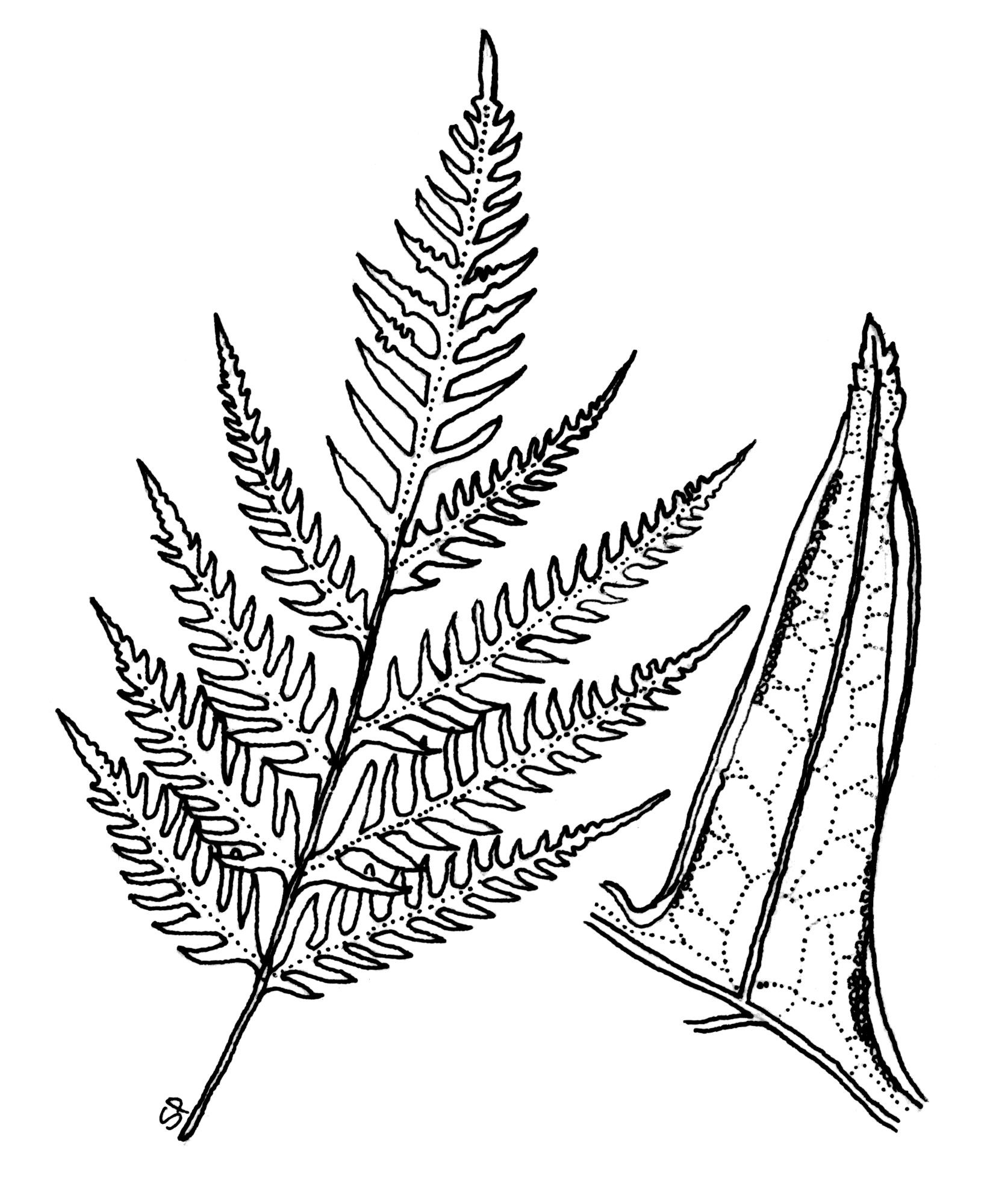
Greek pteris - fern, derived from pteron - wing, referring to the feather-like fronds.
Terrestrial or occasionally semi-aquatic fast-growing ferns with attractively dissected and sometimes variegated fronds with species suitable for almost all growing conditions. Rhizome erect or short-creeping, thick, covered with scales. Sterile and fertile fronds mostly similar. Fronds clustered, divided once or more, not jointed at the point of attachment; veins free or netted. Stalk with a groove on the main stem continuous with those of the branches. Sori linear, along margins of segments and connecting the vein ends. Indusia absent or consisting of the reflexed segment margin.
The common name, Brake, refers to the similarity of many of these species to the common bracken.
c. 250 species from tropical and subtropical regions (7 species in Australia).
Spores.
Veins mostly netted; sori along inrolled segment edges.
Shieh (1966), Walker (1970).
Source: (1995). Pteridaceae. In: . Horticultural Flora of South-eastern Australia. Volume 1, Ferns, conifers & their allies. The identification of garden and cultivated plants. University of New South Wales Press.
